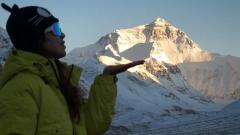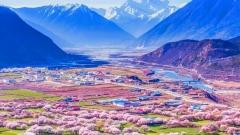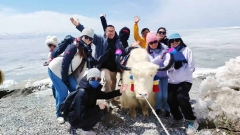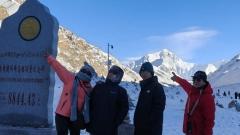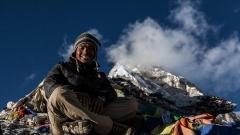Tibet’s high plateaus, prayer flags snapping in wind, and centuries-old gompas (monasteries) feel like places where time moves differently. At the heart of this landscape are Tibetan monks — men and boys who commit their lives to spiritual study, ritual, community service, and a discipline that shapes Tibetan culture itself. For international travelers curious about who these monks are, how they live, and what happens behind monastery walls, this guide will take you inside the daily rhythms, scholastic paths, sacred ceremonies and the unique institution of “living Buddhas.”
Daily Life of Tibetan Monks
Morning Routines and Prayer Halls
A typical monastic day begins before dawn. Monks rise at first light and gather in the main prayer hall for morning prayers that can last one to three hours. These sessions include chanting, recitation of sutras, and sometimes intricate ritual music — brass horns, cymbals, and drums — depending on the monastery’s tradition. It’s common to see rows of young monks, robes folded, pouring butter tea and a simple porridge into communal bowls as part of the morning ritual. They chant while they eat; prayer and daily sustenance are deeply interwoven.
Work, Study and Debate
After morning prayers comes a mix of study, chores, and debate. Monks split their time between reading classical Buddhist texts and keeping the monastery running: cooking, cleaning, tending animals, and maintaining prayer wheels and shrines. A distinctive feature of Tibetan monastic education is formal debate. These spirited, often theatrical debates sharpen logic, interpretation, and the ability to express Buddhist philosophy clearly. Debates typically happen in the courtyard or a special debate hall and are a learning spectacle for visitors.
Meals and Community Life
Meals are simple and frugal by design — barley-based breads, vegetables, and the ubiquitous Tibetan butter tea. Food is often donated by laypeople as a form of merit-making; monks in return chant prayers for donors’ well-being. Monastic life is communal: younger monks learn from seniors, and friendships, jokes, and practical kindness knit daily life together. Despite outward austerity, there’s warmth and humor in monastery corridors.
Afternoon and Evening Practices
Afternoons usually include more study sessions, private meditation or ritual practice, and small group teachings. By dusk monks may gather again to chant or discuss scripture. Many monasteries observe set evening rituals; some monks spend long hours in solitary practice. Sleep is modest — sufficient, but never indulgent — and every element of the day is shaped by the path to inner discipline and compassion.
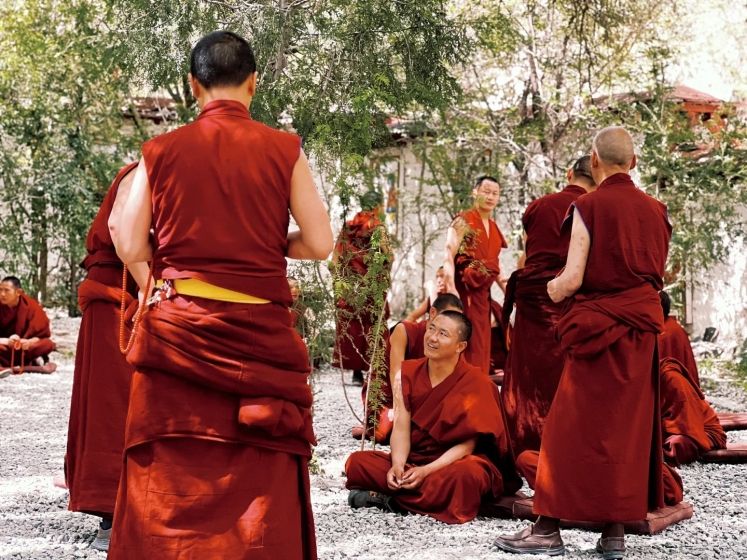
Sera Monks Debate
Scholastic Life: From Novice to Lama
Early Education and Novice Ordination
Boys who enter the monastery often begin their monastic education as novices. In Tibetan the word for monk, trapa, can mean student or scholar, and the environment is as much a school as a spiritual community. From a young age novices learn monastic etiquette, basic prayers and how to recite mantras. They also serve elders and assist with simple tasks — an apprenticeship in humility and discipline.
The Five Great Texts and Lengthy Training
Traditional scholastic training in major monastic systems centers on foundational Buddhist subjects such as Buddhist logic, the Heart Sutra, Madhyamika philosophy, monastic discipline, and abhidharma or specialized tantric teachings — a curriculum that can require many years to complete. Historical systems often organized study into individual courses, sometimes consuming up to 15 years in total. Successive exams and public defenses of learning mark progress. Only after rigorous testing does a monk advance to higher tantric colleges or receive titles that allow teaching or performing advanced rituals.
Formal Precepts and Rites of Ordination
Ordination occurs at defined ages: small initiations as a child (comparable to a novice) and fuller ordination as a bhikkhu in early adulthood. These vows are taken seriously. Under the watch of senior abbots or recognized “living Buddhas,” the candidate makes solemn vows before the sutras — commitment to monastic discipline and service to all sentient beings.

Tibetan Lama
The Role of Lamas and Living Buddhas
Who Are the Lamas?
The term “lama” in Tibetan Buddhism denotes a teacher or spiritual master. Lamas guide meditation, prescribe ritual practices and, in many communities, are moral and cultural leaders. For lay Tibetans, a lama often serves as spiritual counselor — performing blessings, leading ceremonies, and offering instruction.
Tulku: The System of Reincarnated Masters
One of the most distinctive institutions in Tibetan Buddhism is the tulku system, or the recognition of reincarnated masters known as “living Buddhas.” When a particularly revered lama passes away, senior monastics, oracles and sometimes astrological signs help identify a child believed to be that lama’s reincarnation. The child — the tulku — is then educated to carry forward the spiritual responsibilities of the lineage. From a traveler’s point of view, visiting a tulku’s residence or receiving a blessing is a major cultural experience, but it comes with a clear protocol of respect.
Daily Life of a Young Living Buddha
A young tulku often splits his day between study and public duties. Their schedule resembles an accelerated monastic education: morning recitations, private study, public blessings, and evening classes. Visits with a living Buddha can be deeply meaningful for local devotees who give khatas (ceremonial scarves) and bow respectfully. Visitors should follow local custom: present offerings with both hands, bow or clasp hands respectfully, and avoid pointing or intrusive behavior.
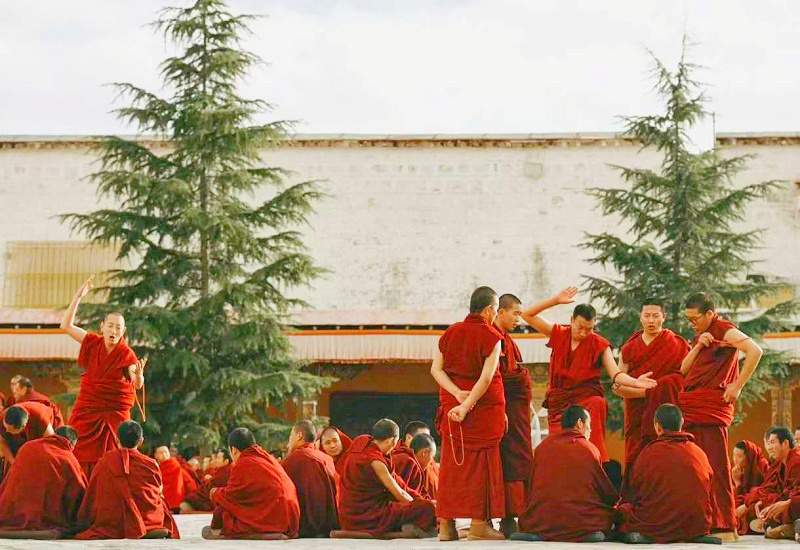
Tibetan Monks
Monasteries: Spiritual Centers and Living Museums
Architecture and Sacred Space
Tibetan monasteries vary in scale and style — from small hilltop chapels to sprawling complexes. Common components include a main assembly hall (for communal prayers), smaller shrine rooms, debate courtyards, dormitories (khangtsen), and Tantric colleges. Walls often are decorated with thangkas (sacred paintings), butter-lamp shrines, and intricate carvings of mandalas, deities and protective symbols. Everyday life and sacred symbolism are woven into the built environment.
Ten Famous Monasteries You May Visit
Many tourists focus on the most famous monasteries because they hold centuries of ritual and scholarship. Among them are: Jokhang Temple in Lhasa, Drepung Monastery, Sera Monastery, Tashilhunpo Monastery, and others that serve as hubs for festivals, teachings, and pilgrimage. Each monastery has its own rhythm of life and special days when rituals or cham (masked dances) are performed — an unforgettable sight if your travel dates match a festival.
Festivals, Masked Dances and Public Rituals
Monasteries are the stage for large public festivals where ritual, dance and community converge. Masked dances (cham) and processionals dramatize spiritual narratives and attract crowds of devotees. For travelers, these festivals are a rare chance to witness living tradition — but remember they are deeply sacred acts for participants. Observe with humility, follow local photography rules, and always ask before filming or photographing people in private rituals.
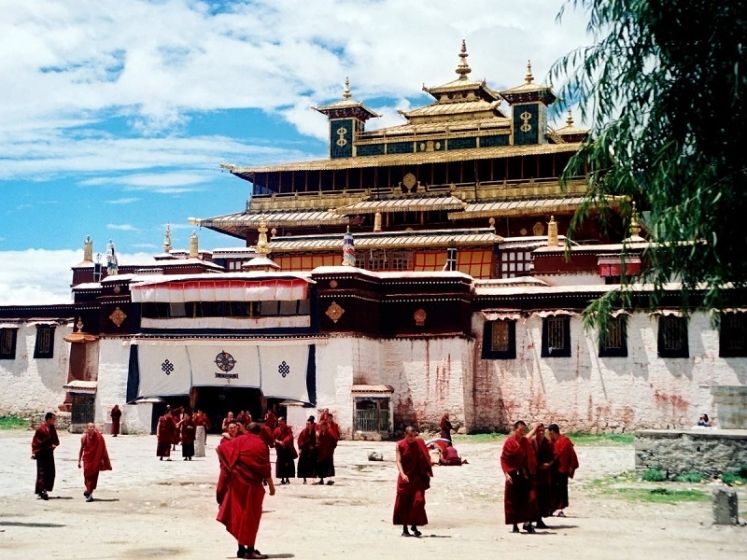
Samye Monastery Monks
Rituals, Offerings and Everyday Devotions of Tibetan Monks
Prayer Wheels, Mani Stones and Butter Lamps
Tibetan devotional life manifests in many small practices: spinning prayer wheels inscribed with mantras, turning hands over strings of prayer beads, circling mani stones carved with “Om Mani Padme Hum,” and lighting butter lamps to accumulate merit. For tourists, these tactile rituals are an accessible way to engage respectfully with local practice — but always follow the lead of devotees and avoid disrupting their worship.
Blessings, Funerary Rites and Merit-Making
Monks perform blessings for homes, businesses, and life events. They also conduct funerary rites, which may include special chanting and rituals intended to aid the deceased in a favorable rebirth. Laypeople often bring offerings of food, money, and robes; in return, monks chant prayers and bestow blessings. This exchange of generosity and spiritual service is central to Tibet’s social and religious ecology.
How to Visit Monasteries Respectfully
Dress, Behavior and Photography
When visiting, dress conservatively: shoulders covered, modest skirt or trousers, and shoes that are easy to remove at shrine thresholds. In assembly halls, walk clockwise around stupas and mani walls; refrain from stepping on thresholds or sacred objects. Always ask permission before taking photos of monks during rituals; many communities prohibit flash photography or filming during certain ceremonies.
Offering a Khata and Making Donations
If you wish to offer a khata (white ceremonial scarf) or make a donation, present it with both hands and a slight bow. Small contributions for butter lamps or monastery upkeep are appreciated and help sustain these living institutions. If you seek a private blessing, arrange it through a local guide or the monastery office rather than interrupting a ritual.
Language and Conversation
Most monks speak Tibetan; some senior lamas and abbots speak Mandarin, and a small number in major centers may understand basic English. Use simple, polite language, and lean on local guides to translate. Avoid theological debates or intrusive questions about another person’s practice — curiosity is welcome, but respect must come first.
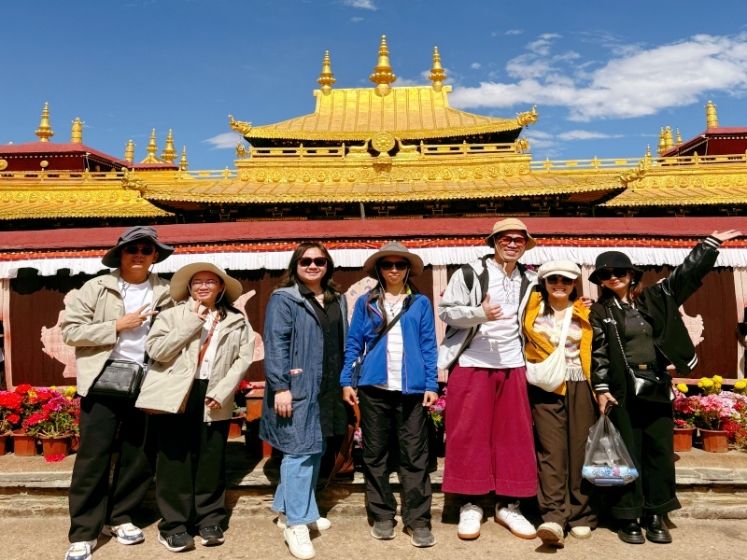
Tourists at Tashilhunpo Monastery
Common Misconceptions and Realities of Tibetan Monks
Myth: All Tibetan Men Become Monks
While historically a significant proportion of Tibetan men lived as monks, the idea that “one in six” or similar ratios remain static is an oversimplification. Modern social change, education, and economic shifts mean that monastic life is now a choice among many. However, monasticism still holds social prestige and spiritual importance in many areas.
Myth: Monks Are Isolated From Everyday Life
Monks are not cloistered hermits removed from society; in many places they are active community members — teaching, counseling and performing rituals for the laity. Their lives are dedicated to both inner cultivation and public service.
Reality: Diversity Within Tibetan Buddhism
Tibetan Buddhism is not monolithic. Different schools (Gelug, Nyingma, Kagyu, Sakya among others) have distinct liturgies, monastic rules and emphases. Monastery life in Lhasa may differ from that in remote mountain gompas, and individual monks have personal spiritual practices within a shared cultural frame.
Practical Tips for Travelers
Best Times to Visit and Festival Highlights
If your trip coincides with a monastery festival, you may witness masked dances, dramatic rituals and large gatherings of devotees. Check local festival calendars and plan accordingly. Traveling in shoulder seasons reduces altitude stress and offers quieter, more contemplative visits.
Altitude and Health
Most monasteries lie at high altitudes. Take altitude acclimatization seriously: arrive slowly, hydrate, avoid heavy exertion in the first 48–72 hours, and seek medical advice if you have chronic conditions. Many travelers schedule a rest day in Lhasa to acclimate before visiting higher sites.
Hiring Guides and Local Hosts
A knowledgeable local guide enriches visits to monasteries: they explain ritual meaning, advise on etiquette, liaise with monastic staff for special visits, and translate. Hiring local guides also supports the community economically.

Ganden Monastery
Frequently Asked Questions (FAQ)
Can I attend a prayer session?
Yes — many monasteries welcome visitors during public prayer sessions. Sit quietly, follow local devotees, and avoid walking across prayer lines. In some inner sanctums, photography is not allowed.
What should I bring as an offering?
Simple offerings — khatas, small donations, packaged food for monks, or funds for butter lamps — are appropriate. Ask a guide for local expectations.
Can tourists photograph monks?
Photography rules vary. Always ask permission and avoid flash during rituals. Respect signs and verbal requests from monastery staff.
Why Tibetan Monks Matter to Travelers
Tibet’s monasteries are not museum pieces; they are active centers of learning, debate and devotion. Meeting Tibetan monks and stepping into their monasteries is more than a cultural experience; it’s an encounter with a living tradition shaped by centuries of philosophy, art and communal practice. For travelers who approach with curiosity and respect, these encounters provide insight into a worldview where compassion, discipline and community weave together daily life.
China Dragon Travel can assist with guided visits, respectful cultural briefings, and itineraries that include safe, meaningful monastery visits. Contact China Dragon Travel to plan an authentic and responsible journey into Tibet’s sacred heart.



